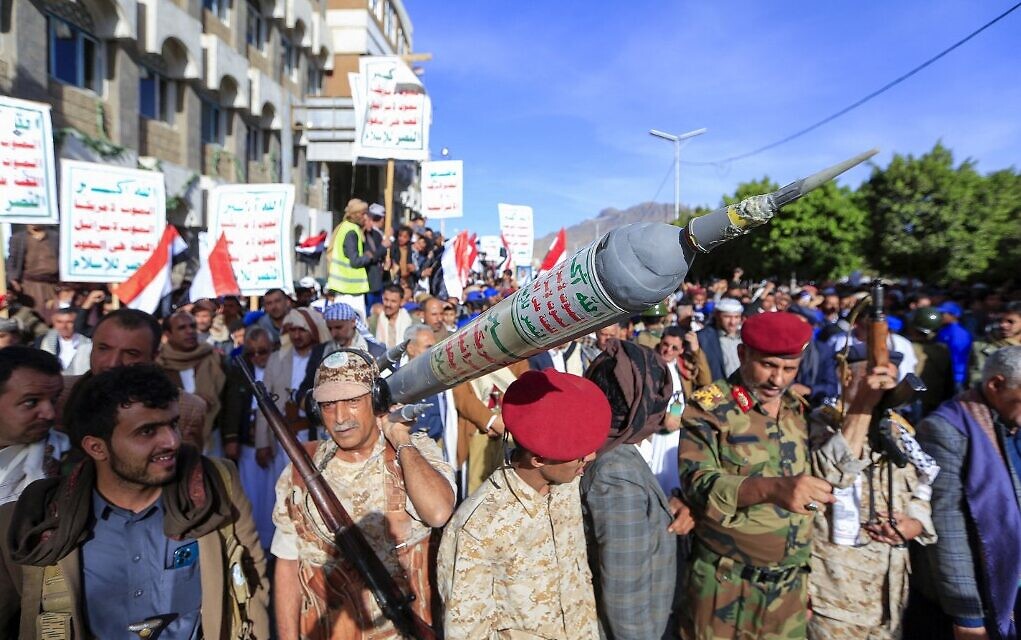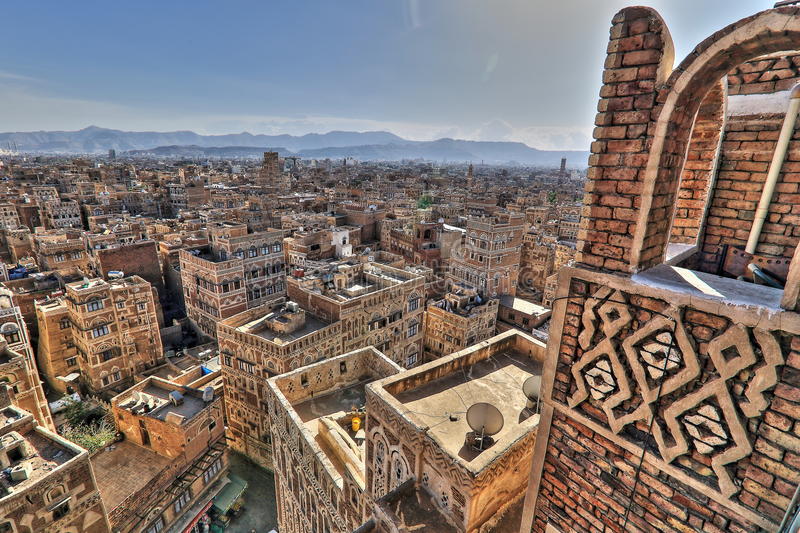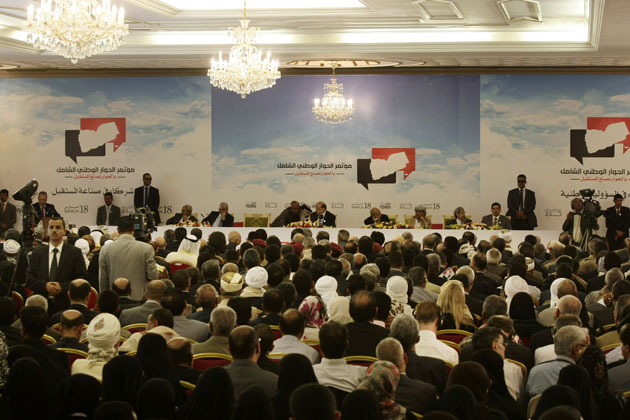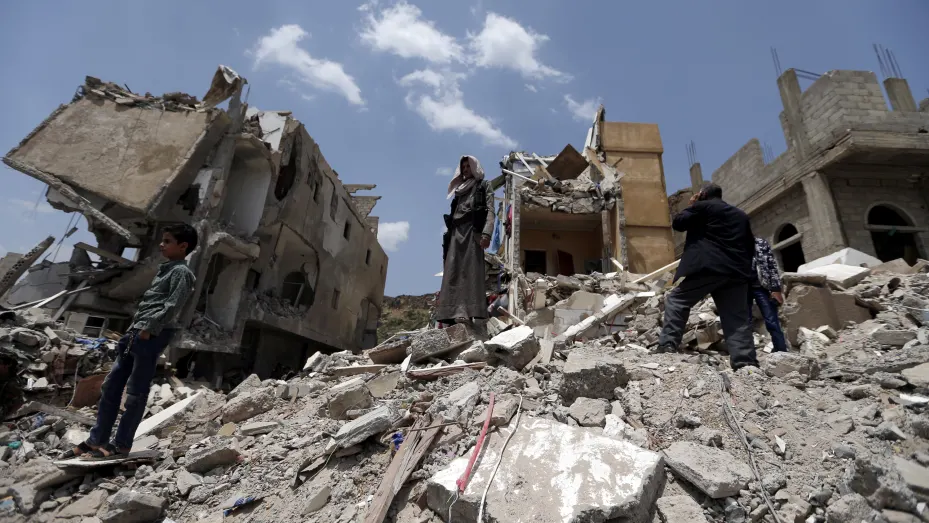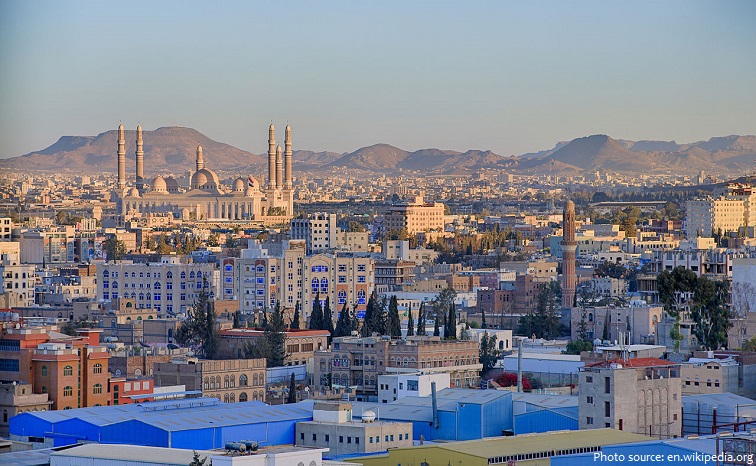Local actors
Today, the main warring parties in Yemen’s civil war are the Houthis, the internationally recognized government, the Southern Transitional Council (STC) and UAE-backed Red Sea coastal forces aligned with Tariq Saleh, a former commander of Yemen’s special forces and a nephew of ex-President.
Houthis: The Houthis, or Ansar Allah (Supporters of God) as they prefer to be called, have rebranded several times since emerging in the early 1990s as the “Believing Youth,” a movement aimed at reviving Zaidi Shia identity in the face of alleged marginalization and discrimination by the state. Ironically, President Saleh and many of the ruling elite in his regime were also Zaidi. Granted, Saleh and other republican leaders since the September 26 revolution of 1962 channeled limited resources to the Houthi heartland in Sa’ada governorate, but their argument that Zaidi identity was under threat seemed to be a cover to restore the political Zaidi ideology that was forced upon Yemenis before the republican revolution. This ideology, which installs Hashemite families as political elite in all state institutions, stands in opposition to the modern republic of Yemen which seeks to be an equal democratic system.
Eventually, the group adopted the name of its founder, Hussein Badreddin al-Houthi, who was killed by government forces in 2004, sparking the first of the six “Sa’ada Wars” between 2004 and 2010. The leaders of the Houthi group are Hashemites, meaning they claim descent from the Muslim Prophet Mohammed. This “superior” bloodline is the basis of a perceived supremacy over other social groups in Yemen that Hashemite imams promoted while ruling parts of Yemen intermittently for a millennium until 1962. Houthi politics draw from the Zaidi imamate blueprint in many ways, including through the appointment of a Hashemite leader (currently represented by Abdulmalik al-Houthi) as the highest authority in the land and bestowing privileges to the broader Hashemite class.
Internationally recognized government: Led by President Hadi and his cabinet which is mostly based in Riyadh, the government is often referred to as the “legitimacy” among Yemenis. The Hadi government’s legitimacy derives from UN recognition as the successor to the Saleh regime, in line with the GCC-brokered political transition that started in 2012.
Southern Transitional Council (STC): The UAE-backed STC was founded in May 2017 by several southern officials in the internationally recognized government whom President Hadi had fired earlier that year. The founders include former Aden governor, Aidarous al-Zubaidi, and Sheikh Hani bin Breik, former Minister of State and Security Belt forces commander, who are currently president and vice president of the council, respectively.
The core leadership of the STC hail from Al-Dhale and Lahj governorates. The inhabitants of this region are known as the Tughma. Their rivals are known as the Zumra from neighboring Abyan and Shabwa governorates. The Tughma and Zumra were the main political elite during the socialist era in the south. Prominent Zumra figures include President Hadi and several of his close political allies. More broadly, the STC can be seen as an outgrowth of the secessionist wing of the Southern Movement known as Hirak, which was organized in 2007 by former southern military and security officials who lost their jobs after the 1994 civil war.
The STC commands a variety of UAE-trained militias formed in the early years of the war. They include the Security Belt forces in Aden, Lahj, Al-Dhale and Abyan governorates, as well as the Shabwani Elite forces in Shabwa governorate and Hadhrami Elite forces in Hadramawt governorate.
Regional actors
Yemen’s civil war is taking place within a broader regional struggle for power in which Saudi Arabia and its Gulf allies, particularly the United Arab Emirates (UAE), have sought to limit Iran’s growing influence.
Saudi Arabia intervened in the war on March 26, 2015 at the request of President Abdrabbuh Mansour Hadi, who was driven from power by the Iran-backed Houthis in early 2015. Saudi Arabia assembled a coalition of Arab states to defeat the Houthi-Saleh alliance and return Hadi and his internationally recognized government to power. Saudi forces mainly supported the remnants of Hadi’s national army fighting Houthi forces in northern governorates until mid-2019, when the UAE announced a military drawdown.
The United Arab Emirates co-led military operations with Saudi Arabia for the first four years of the war, forming militias throughout Yemen’s southern governorates ostensibly to fight Al-Qaeda in the Arabian Peninsula (AQAP), ISIS and Houthi forces. Many of those UAE-backed militias have gone on to pursue broader political objectives under the STC, including driving the national army out of southern governorates. The UAE and STC have focused in particular on weakening government forces affiliated with the Islah party.
The Yemeni forces backed by Saudi Arabia and the UAE formed what became known as the “anti-Houthi alliance.” These allies, working together and separately, achieved many successes in the early years of the war. However, since then, factions within the alliance, in particular, STC-affiliated forces and Islah-affiliated forces in the internationally recognized government’s national army, have increasingly fought each other. STC-aligned forces in Aden attempted to seize control of Aden in January 2018 and succeeded in doing so in August 2019 with the UAE air support.
Iran has provided a steady supply of advanced weapons, fuel and illicit drugs to the Houthis throughout the war. Advisors from the paramilitary Quds Force of the Iranian Revolutionary Guards Corps (IRGC), as well as from Iran’s Lebanese proxy force Hezbollah, have trained Houthi forces to manufacture weapons including missiles and drones and taught Houthi leaders how to rule in line with Iran’s “Islamic revolution.” Although overt support for the Houthis didn’t emerge until shortly after the Houthis seized control of Sana’a in a military coup in September 2014, Iran has sent covert weapons shipments to the group since at least 2009. Yemeni officials have accused Iran of supporting and arming the Houthis dating back to the beginning of the Sa’ada wars between the Houthis and the regime of former President Ali Abdullah Saleh from 2004 to 2010. The ideological influences of Iran’s revolutionary regime on Houthi leaders are evident dating to the 1990s. The Houthi-Iran relationship has grown stronger and more public during the war, particularly in recent years.
International actors
At the international level, the United States and the United Kingdom, as well as the UN Security Council and other international NGOs have been influential actors in the war. In mid-April 2015, three weeks after the start of the Saudi-led coalition’s military intervention, the 15-member UN Security Council passed Resolution 2216 authorizing a targeted arms embargo to prevent Iran from shipping weapons to the Houthis. The resolution demanded that the Houthi-Saleh alliance lay down arms and abide by the Gulf Cooperation Council political transition initiative that sought to bring about democratic reforms in the wake of the Arab Spring uprisings.
The United Kingdom, as the “pen holder” of the Yemen file on the UN Security Council, has played a leading role in shaping subsequent resolutions and determining the stance of the council in general regarding the war.
In the initial years of the war, the United States provided significant support for the Saudi-led coalition including intelligence sharing for airstrikes, mid-air refueling of Saudi fighter jets and general maintenance of the Saudi Royal Air Force. In November 2018, Congress limited American involvement by ceasing fueling operations. In February 2021, incoming President Joe Biden lifted the Trump administration’s designation of the Houthis as a terrorist organization and pledged to stop supporting all offensive Saudi coalition operations in the war.
International NGOs have also played a major role during the war by providing record amounts of humanitarian aid to Yemen’s population and influencing the direction of the conflict at times. The Yemeni parties to the conflict, particularly the Houthis, have weaponized food, cash and other aid provided by UN agencies and organizations like Oxfam and USAID in several ways. The Houthis, which control the most densely populated parts of the country where humanitarian work is concentrated, have diverted aid to loyalists or to the frontlines, sold the aid on the black market to fund military operations, and in doing so prevented the intended recipients from receiving the aid.
Get to know Yemen in-depth by following this page
